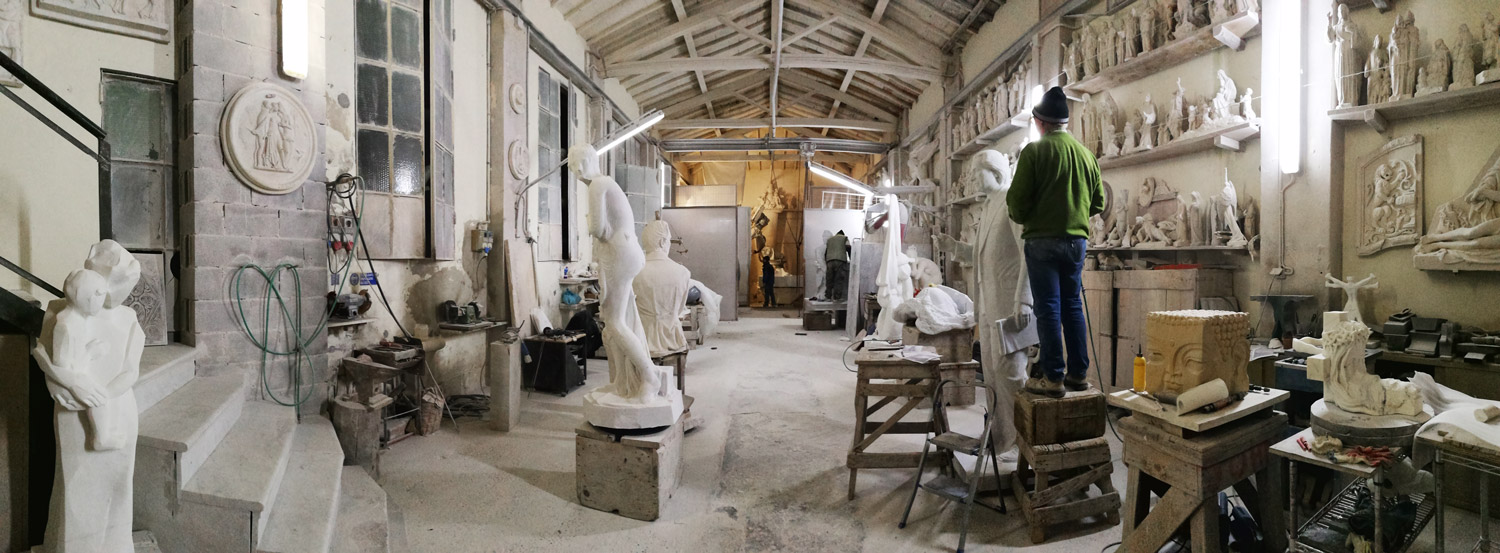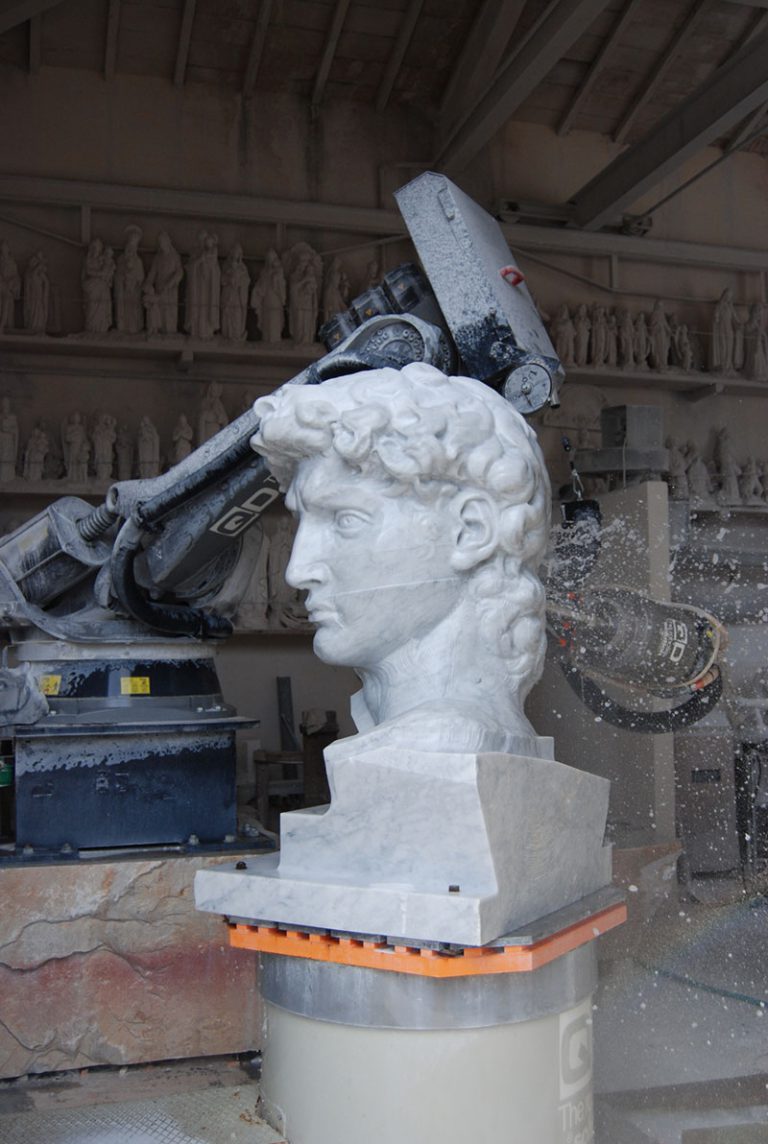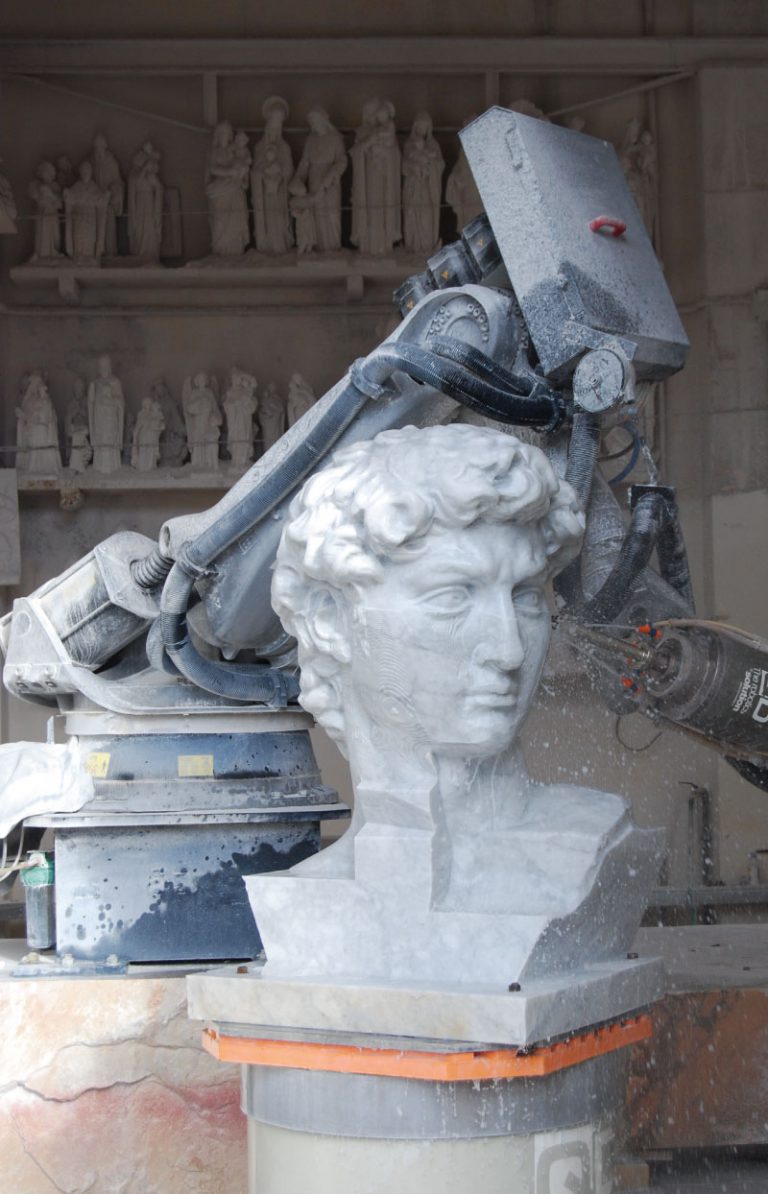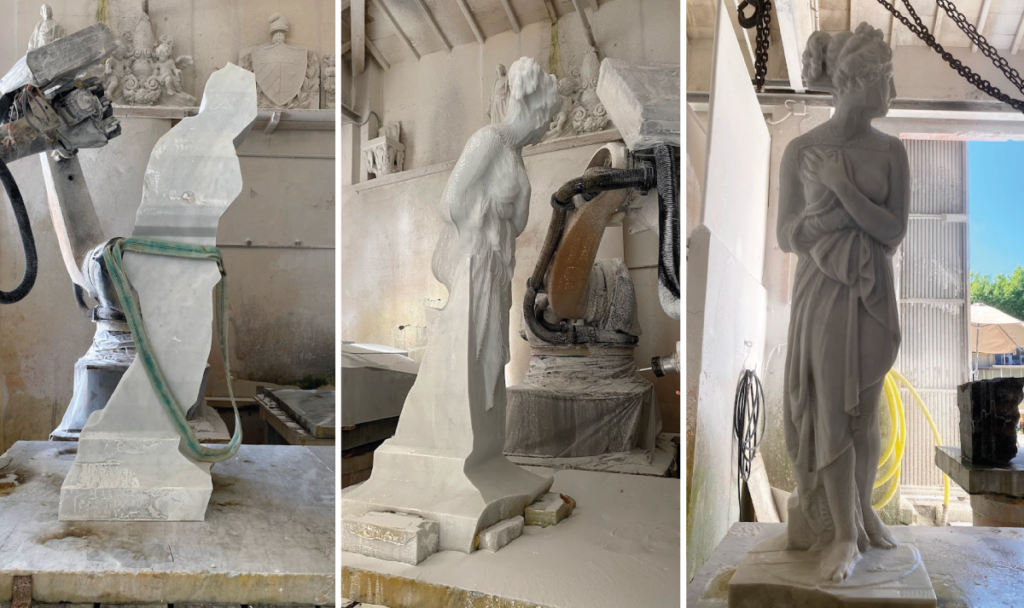

Until the 1980s, Computerized Numerical Control (CNC) machines were used exclusively for high-precision work. They represented the evolution of NC machines, because they allowed direct numerical control from an external computer (CNC). Later, given the extreme versatility and precision, these CNC machines were also adopted in other fields such as the stone industry, and more generally throughout the artisan and artistic sector, for example in the creation of sculptures in wood (wood carving) and in polystyrene (milling machine). The advantages given by these CNC machines are:

Following the advent of robotics, it has become necessary to provide digital 3D models (Mesh, NURBS) for the calculation of the machine path. Thus, the data acquisition segment has also developed, through the use of 3D scanners, or other techniques such as photogrammetry. These techniques allow you to “capture” shapes from real objects.
From this acquisition phase, which also allows you to scan clay and plaster sketches, we move on to cleaning the mesh, sizing the model in an appropriate scale and finally programming the file.
The advantage of CNC milling over traditional techniques is also evident in the simplification of model scaling. Once the model is considered finished, we move on to programming, where the CNC operator chooses the right parameters for the execution of the emptying and finishing operations of the raw material block. Following CNC programming, the advantages are more noticeable in the case of parts with large curved and complex surfaces, such as for marble, wood and plastic sculptures. Furthermore, with the most recent numerical controls, we begin to implement advanced surface machining functions, allowing you to work 3D NURBS surfaces natively, without the need for intermediate CAM programs. It is possible to bring the definition of the surfaces to the point of sanding or polishing, that is, without the need for a stonemason. However, we tend to avoid this possibility, because in addition to the higher cost that comes with it, it is preferable to leave a tangible imprint of manual work, that is the touch of the craftsman, which in our opinion is the real added value.

Since 2008, Studio Stagetti has equipped itself with a 7-axis robotic arm, becoming one of the first sculpture workshops in Tuscany to use it for de-modeling in the field of sculpture. The robotic arm is used to rough the block up to a considerable level of finish; then, we continue with the hand finishing, made by our skilled stonemasons.
The advent of robots and digital techniques has allowed the overcoming of some traditional techniques such as the magnification system with compasses, necessary to scale the models on the marble block. In fact, now the model comes out of the machine with a degree of finish which is very close to the final level. The next phase carried out in our laboratory, unlike other realities, implies that the sculptures are always finished by hand: a human touch that the robot obviously cannot replicate. This implies greater control of the details and high-quality craftmanship by the stonemason: characteristics which be noticed directly on the sculptures. With this technique we can create:
Our sculpture workshop combines the best traditional sculptors with cutting-edge digital techniques.

